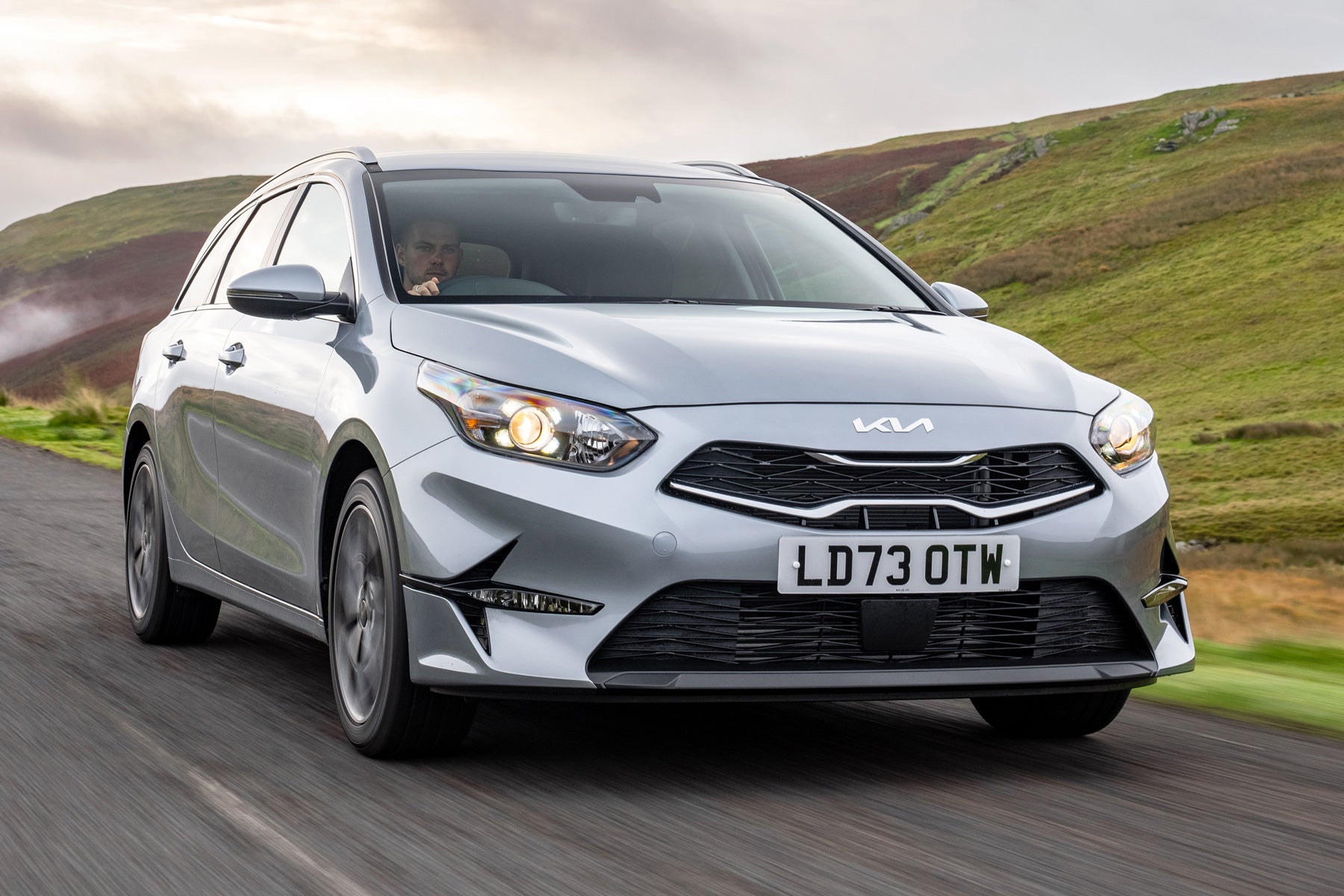Kia Ceed Sportswagon Review 2024
Written by Al Suttie
Quick overview
Pros
- Very user-friendly interior
- Big boot
- Strong warranty
Cons
- Ride a little firm
- Now only available with petrol power
- So-so safety rating
Overall verdict on the Kia Ceed Sportswagon
“Kia has a very keen sense of what family estate car buyers want and need, and it brings all of that together in the Ceed Sportswagon.”
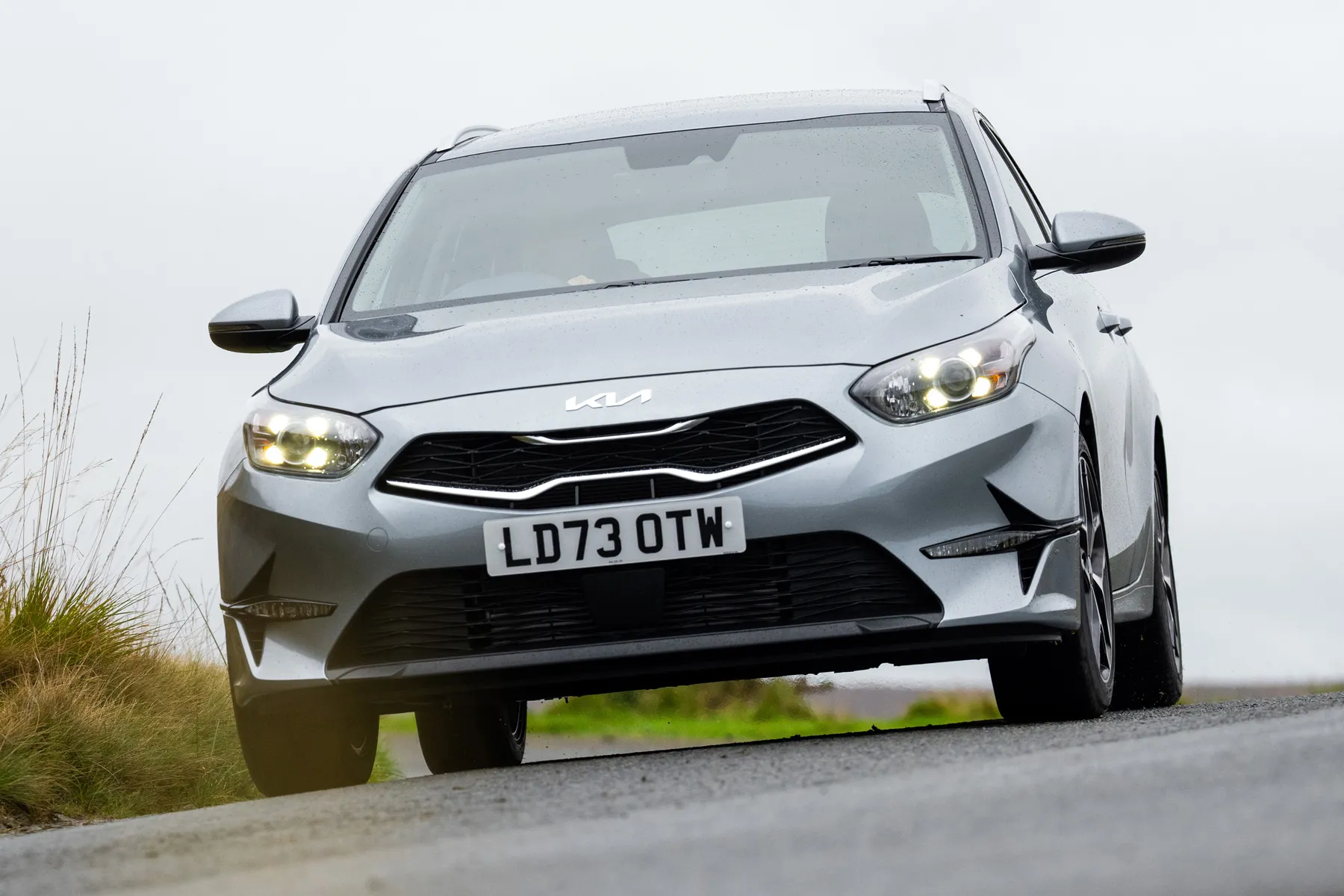
If you believe all the hype, you would think the only type of car that anybody buys today is an SUV. It’s true this shape of car is very much in fashion, but there is still plenty of room left for the more traditional estate car, and the Kia Ceed Sportswagon is a superb practitioner of this art.
The Ceed Sportswagon has plenty of talented competition, such as the Ford Focus Estate, Peugeot 308 SW, Vauxhall Astra Sports Tourer, and the not-long defunct Hyundai i30 Tourer that is very closely related to the Ceed. This means the Kia has its work cut out to shine in a very distinguished sector.
Yet stand out the Ceed Sportswagon does thanks to many appealing qualities and a hard-to-beat buying proposition. Yes, Kia’s seven-year warranty coupled with affordable running costs for the Sportswagon are a big draw for many using their own money to fund this car. That sort of manufacturer back-up gives a whole heap of peace of mind, and it’s also reflected in decent company car lease deals.
As an estate, one of the most important areas to get right is the load bay and the Sportswagon does this superbly. With 625 litres of space on offer with the rear seats in place, it’s not just big by the standards of mid-size estates, it’s just plain big.
Not only that, the Kia’s boot is easily enlarged to a full capacity of 1694-litres with the 60-40 split and top rear seats tumbled to leave a flat load floor. If you need more space than this, you’ll be looking at some much bigger and pricier wagons or investing in a trailer.
There’s a good deal of space and comfort for the Ceed Sportswagon’s occupants, too, with lots of room for heads, legs and shoulders. It makes the Kia an ideal family car as it can carry five people without inducing any arguments from those in the back seats. Only a Skoda Octavia Estate gets the better of the Kia in this respect, and that’s very good company to be keeping for any estate.
It’s not all perfection with the Kia Ceed Sportswagon, though. It didn’t perform quite as well as we’d have expected when tested by Euro NCAP for safety, scoring only four stars when five has become the class norm.
The Ceed’s ride is also a little on the firm side, so a Ford Focus or Volkswagen Golf is a marginally more cosseting place to cover longer drives. Kia also provides a single engine option now in the Ceed Sportwagon, though this is the firm’s excellent 1.5-litre turbo petrol with 160PS and a choice of six-speed manual or seven-speed automatic gearboxes.
Is the Kia Ceed Sportswagon right for you?
Anyone in the market for a family estate car would do well to have the Kia Ceed Sportswagon on the shopping list. It’s very well made, has a large boot and it’s easily extended to offer even more luggage room, and it’s comfortable. It’s not as plush to drive as a Volkswagen Golf nor quite as roomy as a Skoda Octavia, but the Kia comes with a brilliant seven-year warranty that gives it a top drawer ownership experience.
What’s the best Kia Ceed Sportswagon model/engine to choose?
There’s no such thing as a poorly equipped Kia Ceed Sportswagon, so any trim will provide most of what you need. We’d plump for the GT-Line as the right balance between cost and equipment as it has heated front seats and steering wheel, and other features like Kia’s seven-year Connect Services for wifi, as well as a rear parking camera.
There’s only one engine option and that’s the 160PS 1.5-litre turbo petrol. It’s a good engine to use and you can pick from six-speed manual or seven-speed automatic transmissions. We’d take the manual as it feels a bit livelier to drive than the auto.
What other cars are similar to the Kia Ceed Sportswagon?
The most direct rival to the Kia Ceed Sportwagon is the Skoda Octavia Estate that provides a fraction more room for people and luggage than the Ceed. The Octavia is also good to drive and has a choice of engines. You could also look at the Volkswagen Golf Estate or the Ford Focus Estate as two very good alternatives, while the Peugeot 308 SW and Vauxhall Astra Sports Tourer come with a big, bold dash of style thrown into the mix. You could also consider the Toyota Corolla Touring Sports and Suzuki Swace with their hybrid power.
Comfort and design: Kia Ceed Sportswagon interior
"Functional is a word that describes the Kia Ceed Sportswagon’s interior very well, and we mean this in the best possible way. Rather than having every control operated through the infotainment system, the Ceed retains physical, separate buttons for the ventilation and the stereo. It’s an ideal set-up as the controls you use the most often are also the easiest to access and use on the move with minimal distraction from driving."
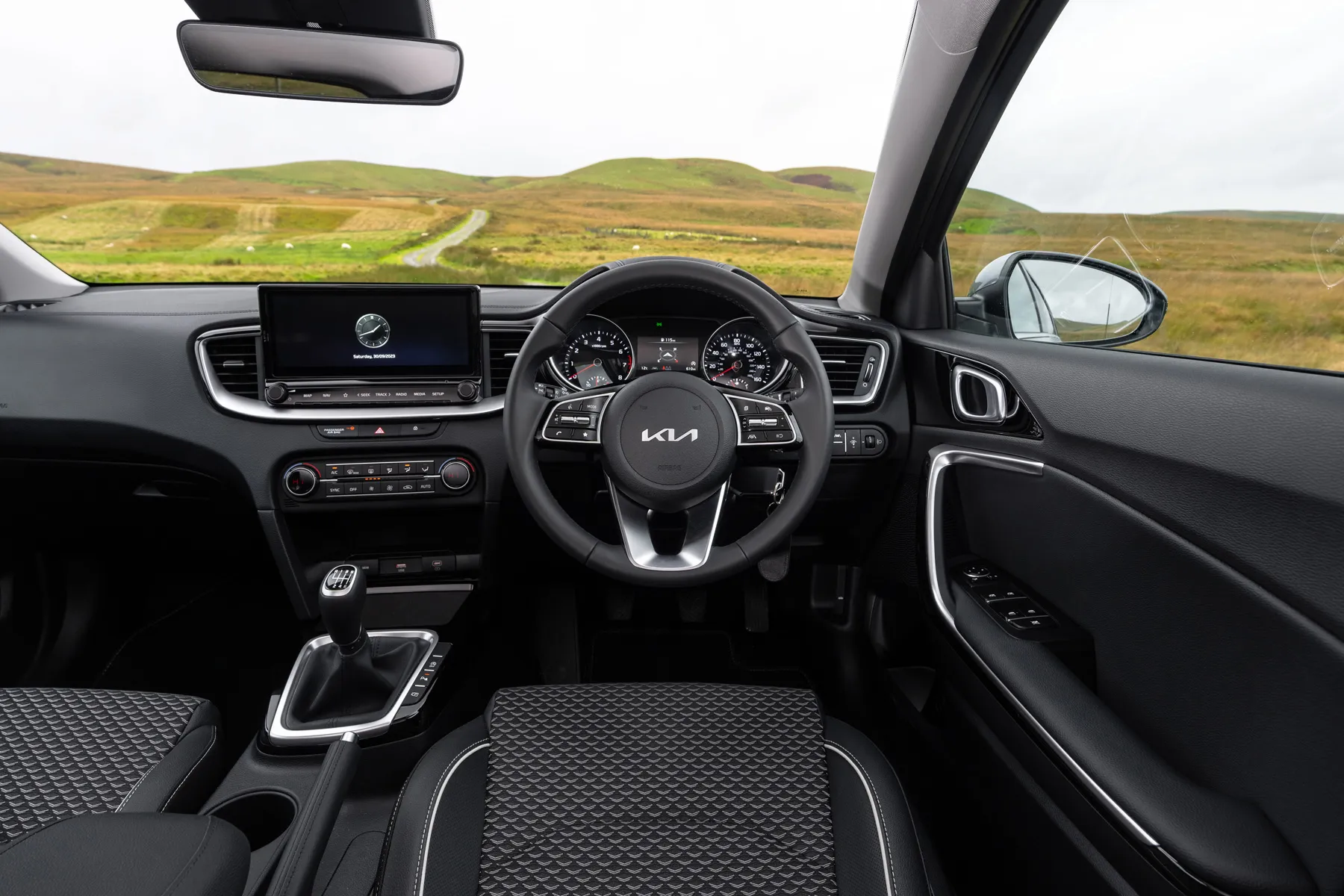
The infotainment system itself is simple to fathom and the main instrument dials keep with an analogue display. They are clear, easy to read and look classy, while the digital screen in between the main dials can be scrolled through for various data using steering wheel buttons. These buttons also work the hands-free phone connection and stereo.
The driver enjoys a height adjustable seat and more than ample comfort, and most Ceed models come with height adjustment for the passenger, too. The view out for the driver is generally good, but there is some interference from the window pillars when checking over your left shoulder.
Quality and finish
The quality of the Kia Ceed Sportswagon really impresses. There are lots of soft-touch materials and it’s all well finished, with a feeling that it’s a car designed to last.
Standard 2 models are a little drab to look at, but go up the range and you get more visually appealing piano black trim. All models feature a leather steering wheel and gear lever, too.
We’ve found the Ceed Sportswagon to be free of any creaks or rattles, and all of the controls work with a positive, solid action that imparts a sense of high grade quality.
Infotainment: Touchscreen, USB, nav and stereo in the Kia Ceed Sportswagon
The Kia Ceed Sportswagon gets a clear 8.0-inch touchscreen in the centre of the dash as standard in the base 2 trim. It comes with a reversing camera along with Android Auto and Apple CarPlay, as well as Bluetooth connection and voice control.
This system doubles up as the screen for the reversing camera, and the Ceed also has a 4.2-inch digital display between the main dials in all but the top model.
In that high-spec GT-Line S, you get a 12.3-inch configurable dash display in place of the analogue instruments. It’s similar to Audi’s set-up and has clear, crisp graphics to keep with the sense of a very well made and equipped car.
If you choose a Ceed Sportswagon in anything but the base 2 trim, you get a larger 10.25-inch colour touchscreen for the infotainment. It’s placed high in the centre of the dash, so it’s easy to see and reach.
It’s a system that is very easy to use, and one of the best we’ve come across in terms of clarity. This makes a big difference when using it as you drive as the screen responds to inputs rapidly rather than drawing your attention away from the road ahead as you wait to see if it has done as you asked.
Space and practicality: Kia Ceed Sportswagon boot space
As small estates go, the Kia Ceed Sportswagon is one of the bigger ones, with 625-litres of boot space. As a comparison, the Volkswagen Golf Estate has 605-litres, while a Ford Focus Estate is considerably smaller with 575-litres.
This sort of capacity in the Kia just makes life easier when fitting in bigger items as the boot is a regular shape with no intrusion to snag bulkier loads on. You also get four tie-down points to secure loads from sliding around on the move.
It’s not just the size that’s useful either. The opening is very wide and the low load lip means lugging heavy items in isn’t backbreaking.
All models get an underfloor box to secure or hide smaller items, as well as a load cover and a bag hook to ensure your shopping won’t roll around the boot floor. Kia really has thought it all through to make the Sportswagon one of the best estates going.
The rear seats fold down – almost flat – to create a usefully big load area, too, while 3 trim models get handles in the boot that let you fold down the seats. With all the rear seats tipped down, you have to 1694-litres of cargo hold.
Handling and ride quality: What is the Kia Ceed Sportswagon like to drive?
"You might expect to make a considered trade-off between ride comfort and handling ability when choosing a mid-size estate car. That is not the case with the Kia Ceed Sportswagon, which strikes a much better balance between these competing elements than most of its rivals."
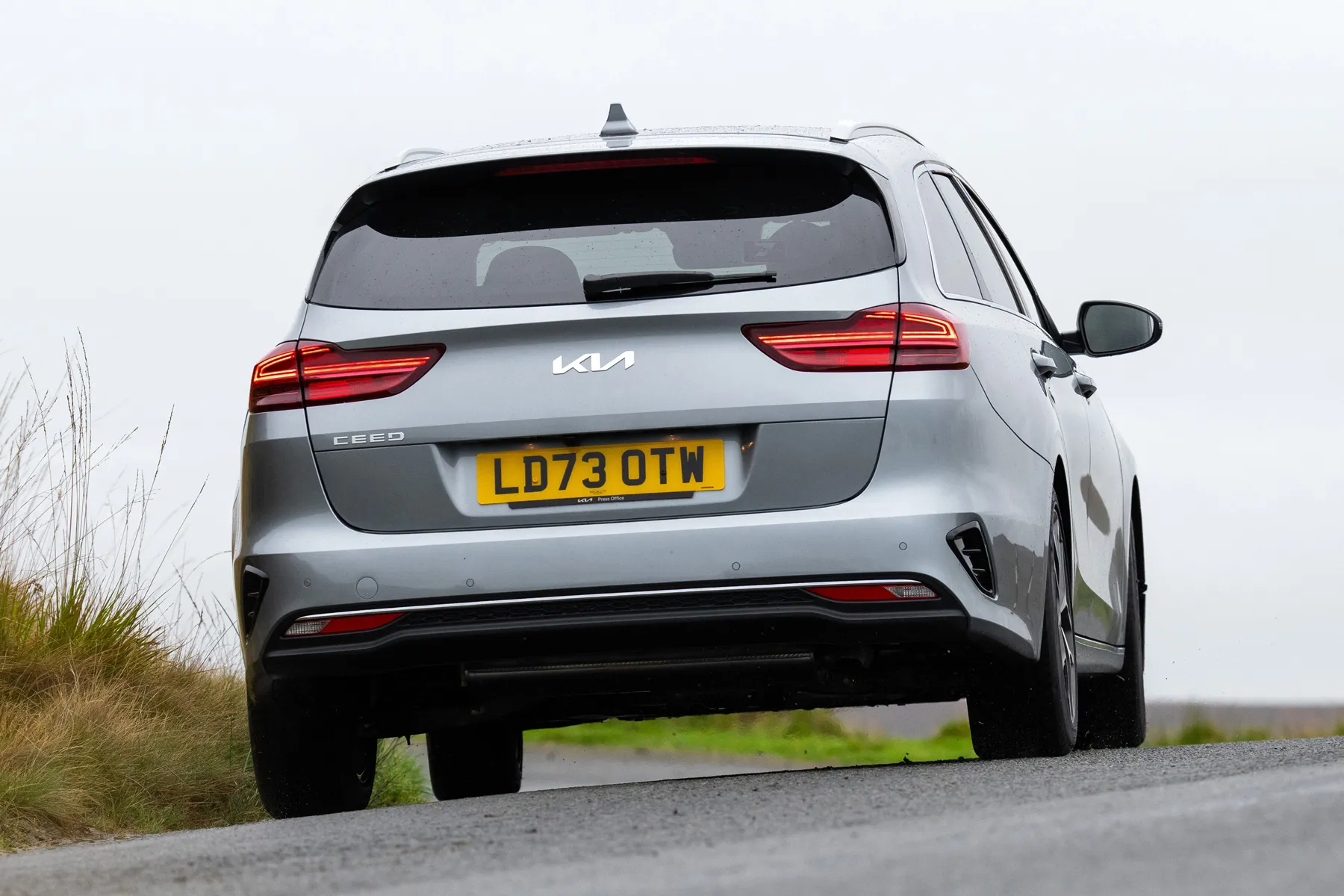
There is a firmness to the ride of the Kia that is most noticeable when it’s just the driver alone in the car. With a couple of passengers or boot filled with kit and caboodle, it recedes so the car deals with lump-strewn roads as well as a Skoda Octavia Estate or Volkswagen Golf Estate, but not as smoothly as a Ford Focus or Peugeot 308 SW.
Even so, you’ll find the Ceed is a very cushy car to drive on long trips, and it can also up its game to be more fun than you would reckon when the roads turn twisty and turny. Quick, responsive steering plays a major role in this, even if it’s not as full of feedback as a Focus’, but it’s more than fine for most drivers and this isn’t a hot hatch, after all.
Through the bends, the Ceed Sportswagon has plenty of grip and poise, so it’s sure-footed and keeps plenty in reserve at usual road speeds in case you need to make an emergency avoiding manoeuvre.
What engines and gearboxes are available in the Kia Ceed Sportswagon?
Kia now offers a single engine in the Ceed Sportswagon, which is a 1.5-litre turbo petrol. It comes with 160PS delivered at 5500rpm, but it delivers strongly from little more than tick over as peak pulling power of 253Nm comes in at 1500rpm and stays there to 3500rpm. In other words, this is exactly the rev band where the engine spends almost its entire working life.
The result of this is the 1.5-litre engine feels more like the 2.0-litre units found in some larger estate cars and it doesn’t feel strained when asked to work harder. Getting up to speed on the motorway or when pulling on to a busy roundabout is not a problem for the Kia.
Our only criticism is the engine can take a split second longer than feels ideal to wake up from idling. Just as you put your foot down to pull away, it can seem like nothing is happening for half a heartbeat and then it gets going. It’s something you become used to, but it can be disconcerting the first few times.
This tendency of the engine to take a moment before entering the fray is more obvious with the seven-speed automatic gearbox. Otherwise, this is a smooth and easy to live with transmission that takes the strain out of regular driving duties.
Even so, we’d still opt for the six-speed manual gearbox unless you need an auto for your driving. The manual has a light, precise action when you change gear and it’s well suited to the 1.5-litre engine.
It’s a pity Kia no longer offers the 1.6 turbodiesel engine in 116- and 136PS power outputs as it was well matched to the Sportswagon and delivered willing performance coupled to good economy.
Refinement and noise levels
There is slightly more noise inside the Kia Ceed Sportswagon than in the hatch model or Proceed fastback version. That’s to be expected and you’ll only really be aware of this when driving with the rear seats folded down and the load bay is at its most open.
This noise is mostly generated through the tyres as the pass along the road surface, so the decibels are dependent on speed to a larger degree, though rougher roads make it more obvious, too.
The 1.5-litre petrol engine is a great companion on any trip as it keeps noise to a very low level. Work it hard and it still remains smooth and refined, so you can cover big distances without the added wear of excessive noise from under the bonnet.
There’s also little in the way of wind noise to be heard inside the Ceed Sportswagon, so it is as good as any in its class for hush in the cabin.
Safety equipment: How safe is the Kia Ceed Sportswagon?
Every Kia Ceed Sportswagon comes with three rear seatbelts, Isofix child seat mounts on the two outer seats, and six airbags.
The Ceed scored a mildly disappointing four-star rating from Euro NCAP, though this was upped to five stars when it was tested with the optional safety pack included.
The Kia Ceed Sportswagon also has high beam assist, lane follow and lane keep assistance, driver fatigue alert, and automatic emergency braking.
The 3 trim includes blind spot warning, rear cross traffic alert, speed limit warning, and Normal and Sport driving modes. Only the GT-Line S model has smart cruise control with stop and go ability, and the Smart Park Assist System to guide the car into parking spots.
MPG and fuel costs: What does a Kia Ceed Sportswagon cost to run?
"The entry-level 2 trim of the Kia Ceed Sportswagon delivers combined average fuel economy of 48.7mpg when coupled with the six-speed manual gearbox that is standard with this version. That’s reasonable, but a Suzuki Swace easily exceeds this with its petrol-hybrid power set-up."
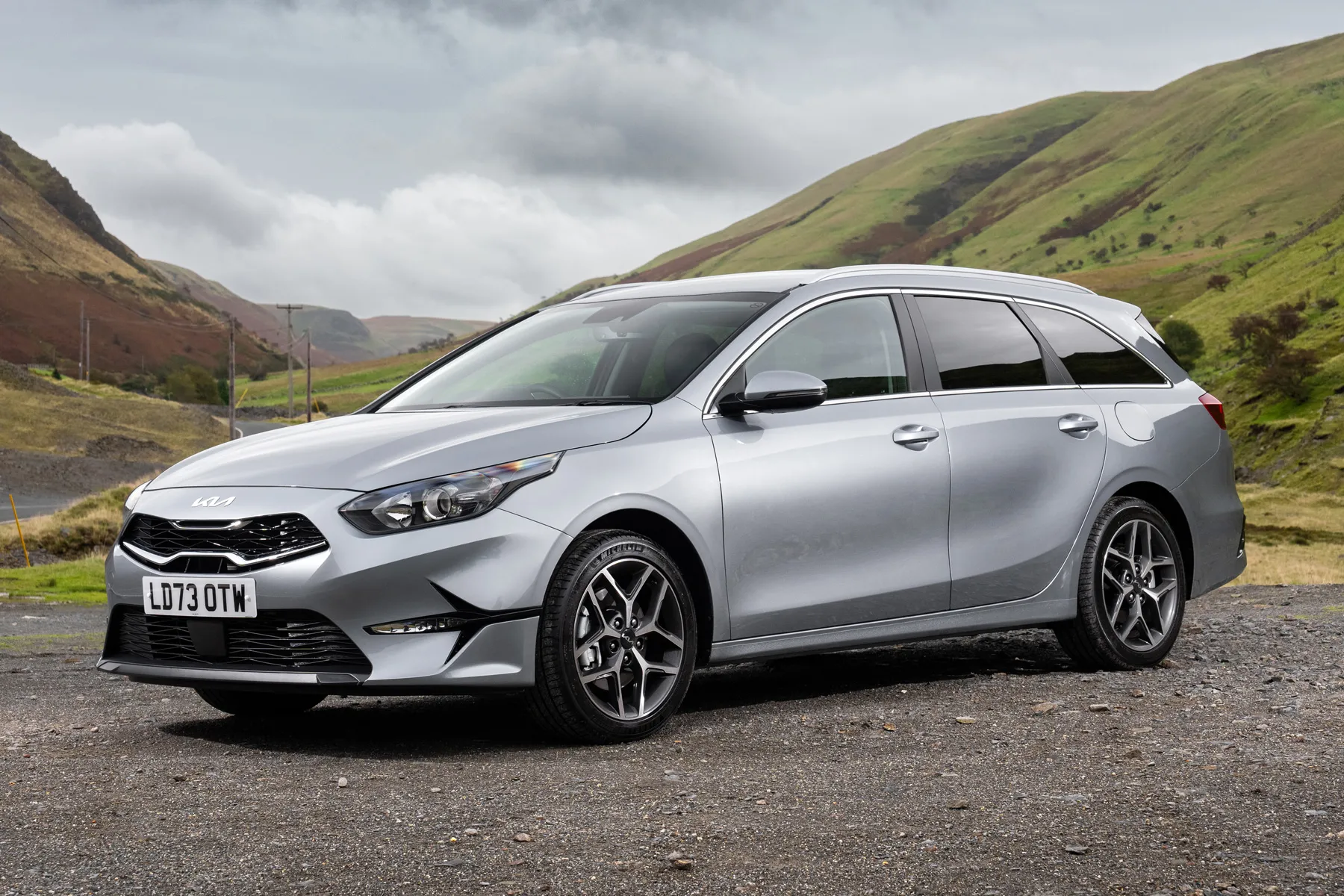
If you choose the Ceed with its seven-speed automatic transmission, the combined consumption falls back slightly to 47.9mpg. With a 50-litre fuel tank fitted to the Sportswagon, it gives a driving range of more than 500 miles with either gearbox when driven moderately.
How reliable is the Kia Ceed Sportswagon?
Kia came in a very impressive eighth overall in the 2022 HonestJohn Satisfaction Survey, and this result is reflected in other reports about the Ceed Sportswagon’s reliability.
Servicing a Ceed won’t be expensive and is needed every 10,000 miles or 12 months. The car comes with a seven-year, 100,000-mile mileage warranty for an easy life.
Insurance groups and costs
The entry-point Kia Ceed Sportswagon 2 model falls into Group 14 to be the cheapest of the range to sort cover for. The GT-Line and 3 sit in Group 15, while the GT-Line S skips up a few notches to reside in Group 18.
VED car tax: What is the annual road tax on a Kia Ceed Sportswagon?
Take the Kia Ceed Sportswagon in 2 trim and it produces 127g/km of carbon dioxide emissions to attract a first-year Vehicle Excise Duty price of £210. The other Ceed models that sit on larger 17-inch wheels tip into the next road tax bracket, so you’ll have to fork out £255 for the first year.
After that, all Ceed models will revert to the base £180 road tax rate.
How much should you be paying for a used Kia Ceed Sportswagon?
"Opting for a used Kia Ceed Sportswagon opens up the opportunity to choose a diesel engine rather than just a petrol as with a brand new version. There are plenty of the 1.6 CRDi diesel models for sale and prices start at £11,000 for a five-year old example in GT Line trim with around 50,000 miles on the clock."
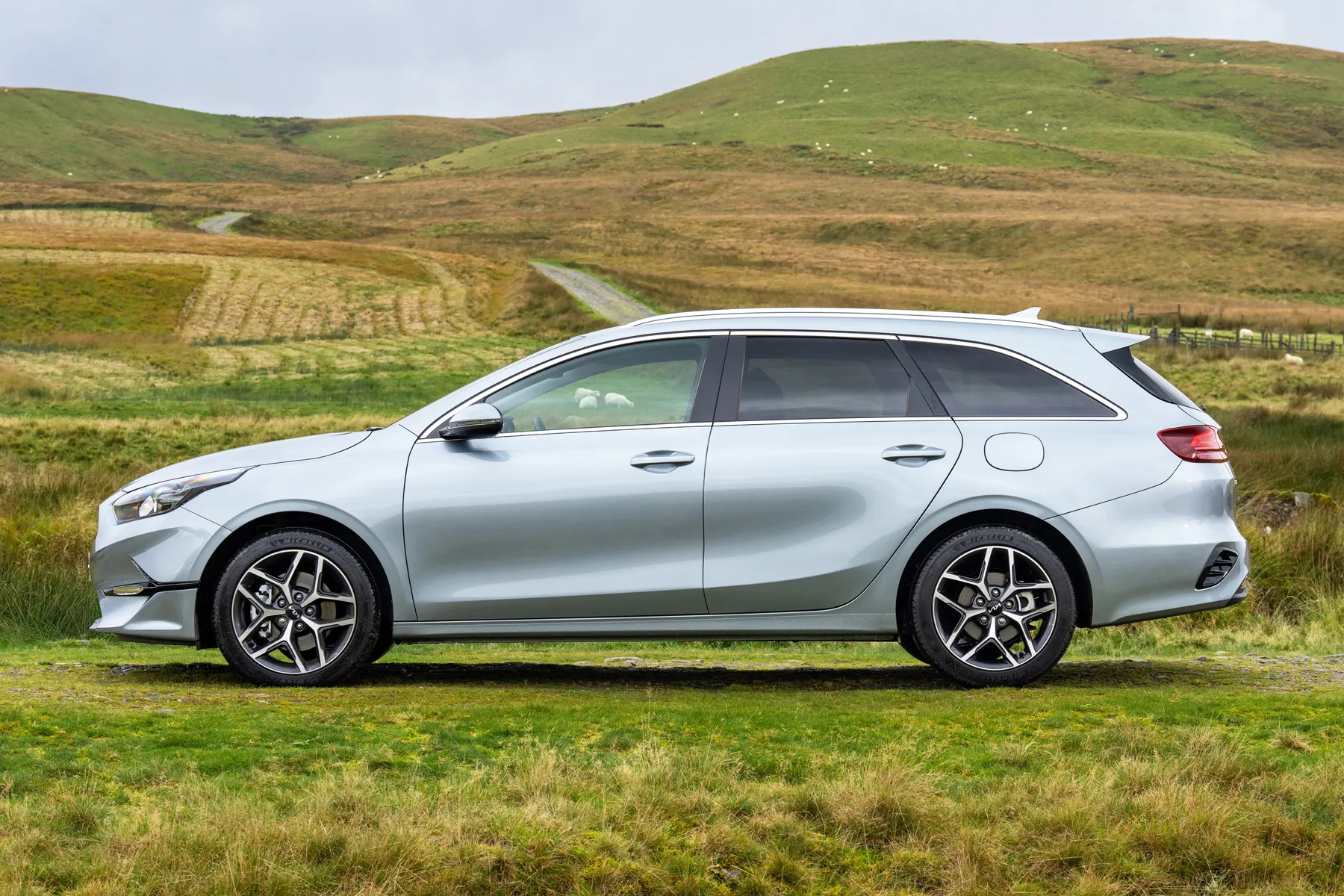
If you want to stick with petrol, a 1.0-litre example will be similar in price and miles to the diesel above, while a 1.4 will command from £14,000.
A nearly new Ceed Sportswagon with the 1.5T GDi turbo petrol motor will cost from £19,000 for a car with less than 10,000 miles to its name.
Trim levels and standard equipment
Go for the Kia Ceed Sportswagon in 2 trim and you get 16-inch alloy wheels, automatic headlight control and roof rails.
Inside, the 2 has black cloth upholstery, manual driver’s seat height adjustment, electric windows all round, cruise control, air-conditioning, and a 4.2-inch dash display cluster.
Move up to the Kia Ceed Sportswagon 3 and you enjoy 17-inch alloy wheels, rear privacy glass, rain-sensing wipers and heated door mirrors.
You also get man-made leather for some upholstery, passenger seat height adjustment, heated front seats and steering wheel, and an electronic parking brake.
The GT-Line and GT-Line S have a sportier look and some additional equipment. Take the GT-Line and it builds on the spec of the 2 trim with 17-inch alloys, automatic wipers, electrically folding door mirrors, and LED front fog lights.
For the interior of the GT-Line, you get man-made grey leather upholstery, passenger seat height adjust, powered lumbar support for the driver, heated front seats and steering wheel, and dual zone air conditioning.
The GT-Line S upgrades from the 3 trim with its 18-inch wheels, smart cruise control and Smart Park Assist, and panoramic sunroof. It also has black leather upholstery, driver’s seat position memory, wireless phone charger, 12.3-inch TFT Supervision main dials, and heated outer rear seats.
Ask the heycar experts: common questions
Can you only get the Kia Ceed Sportswagon with a petrol engine?
What other Kia Ceed models are on offer?
Can I buy a four-wheel-drive Kia Ceed Sportswagon?
Get our latest advice, news and offers
Keep me updated by email with the latest advice, news and offers from heycar.
By submitting you agree to our privacy policy
